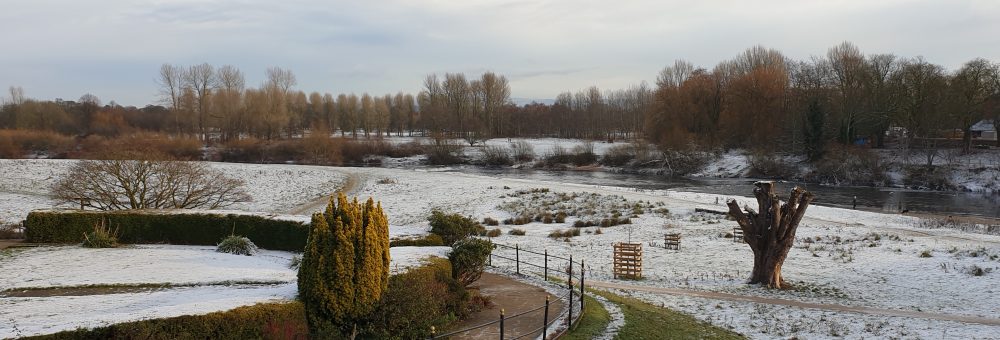
Over on his Biblical Musing blog, Don Camp is eager to show us how, despite their disparities and contradictions, the two very different nativity stories in Matthew and Luke ‘mesh perfectly’.
Let’s take a closer look at some of that perfect meshing, shall we?
Herod v. Quirinius
First, the two accounts can’t even agree on when Jesus was born: Matthew’s gospel claims it was when Herod the Great was king (Matthew 2.1) while Luke says it was when Quirinius was governor of Syria (Luke 2.2). Yet Herod died in 4BCE and Quirinius didn’t become governor of Syria until nine years later, in 6CE. So Jesus couldn’t have been born at a time when both men were in their respective positions. This anomaly, as we’ll see, is a serious problem for the two accounts.
Census v. no census
Luke contrives to get Mary and Joseph to Bethlehem to fulfil the prophecy of Micah 5.2 which said the Messiah would be born in Bethlehem. He comes up with the idea that these Nazareth residents trekked all the way to Bethlehem – a journey of about 80 miles – because of a Roman census. The Romans did indeed conduct a census in 6CE (which presumably is why Luke wants the story to take place then) but it would not have entailed anyone travelling to their ancestral home. Why would it? Can you imagine the chaos that would ensue? The Romans would not, and did not, impose such a ridiculous demand on an already disgruntled populace.
Matthew, meanwhile, doesn’t mention any census – his Jesus was born about 11 years earlier – and he seems to think the family already lives in Bethlehem (Matthew 2.11 & 16). So, was Bethlehem their home as Matthew implies, or did they have to travel there from Nazareth, as Luke insists? Or had they nothing at all to do with Bethlehem? Matthew and Luke’s contradictory accounts are nothing more than clumsy attempts to show that Micah’s ‘prophecy’ is fulfilled in Jesus.
The Manger v. no manger
If they already lived in Bethlehem as Matthew suggests, there would be no reason for Mary and Joseph to search out an inn in which to stay for a census that had nothing to do with them. No inn, no ‘stable’ (though neither gospel mentions a stable as such) and therefore no manger. Yet there it is in Luke 2.7. It’s totally absent from Matthew’s account where, presumably, Mary simply had the baby at home.
Related v. Do I know you?
Luke has a long fable about the pregnancies of both Mary and Elizabeth, the mother of John the Baptist. He says the two women are related, possibly as cousins, making Jesus and John second cousins. The fourth gospel, however, asserts that the adult Jesus and John don’t know each other (John 1.33), while Matthew – and Mark too – don’t consider any of this significant enough to mention.
Don thinks the gaps in each account are just fine because God arranged for them to be covered by the other gospels. Yet only Matthew and Luke think to include anything about Jesus’ birth, and much of that is contradictory. Don’t Mark and John know anything about it? Was it not important to them? Even Paul, writing closest to Jesus’ lifetime doesn’t see fit to refer to it. Mary, whom both Matthew and Luke say was a participant in events, seems to have forgotten all about them when she later considers her adult son to be out of his mind (Mark 3.21).
The wandrin’ star v. clear blue skies
Nobody but Matthew mentions the star. Was Luke unaware of it? How about everyone else? If it was as astronomically significant as the story suggests, shouldn’t there be a record of it somewhere? And do stars, billions of miles from the Earth, really lead the way to a single spot here on the planet’s surface? Nobody but Matthew falls for this one – but then he would; he’s the one making it up.
Shepherds v. Astrologers
Luke has shepherds, Matthew astrologers who ‘visit the house’ where Jesus lived. Which is it – shepherds or astrologers? Both? If so, why does neither gospel writer mention the other’s set of visitors? Could it be that the shepherds and astrologers have their own symbolic significance in the gospel in which they appear and are therefore literary inventions? One suspects it could be.
Massacre v. nothing to see here
Herod the Great, who died, remember, almost a decade before the Roman census, orders the murder of all baby boys up to two years of age. At least he does in Matthew (2.16-18); Luke knows nothing of this so called ‘Slaughter of the Innocents’, presumably because Herod had been dead nine years by the time his story is set and, presumably, because it never happened. There is no record of such an atrocity anywhere in the historical record. Surely the Romans would have had something to say about it, given Herod was greatly exceeding his powers as a puppet ruler. One might almost think Matthew invented the whole thing just to make it look like another ‘prophecy’ was being fulfilled (Jeremiah 13.15 this time).
Egypt v. home for tea
Matthew (2.13-18) has the family flee to Egypt after the visit of the astrologers to avoid Herod’s hissy-fit and then when he dies (two years later?) they return to make their home in Nazareth (Matthew 2.19-23). According to Luke, however, they lived in Nazareth before the birth (Luke 1.26) and simply went back there once they’d had the eight-day old baby circumcised (Luke 2.38); no mention of the Egypt trip nor of Herod (unsurprisingly when he’s long dead according to Luke’s chronology.)
So there you have it. You be the judge of how ‘perfectly’ the two stories ‘mesh together’. And while you’re doing that, be sure to have a wonderful, superstition-free Christmas.





